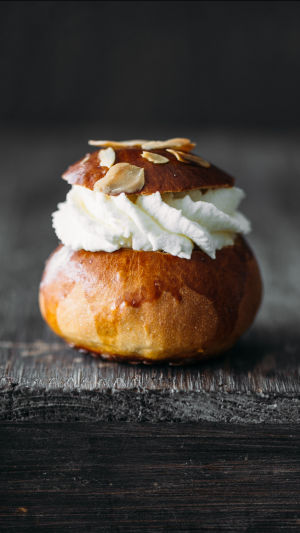Semla: a cardamom-flavored wheat flour bun filled with almond butter and whipped cream - has become a carb-rich icon in Sweden. At first, semla was just a loaf of bread soaked in hot milk (called hetvägg).
At some point, Swedes got tired of strictly adhering to Lent, added cream and almond paste to the mix, and started eating semla every Tuesday between Shrove Tuesday and Easter.
Today, such reservations do not exist, and semlor (plural for semla) is usually found in bakery windows after Christmas because they are considered decent—sometimes even earlier.
This was followed by a nationwide collective complaint about how it was getting earlier each year.
The bakery has been challenging the traditional semla for years, hoping to create the next big hit. The "feel" of experimental semla includes semmelwrap, where the dough is rolled flat, filled with almond paste and whipped cream, then folded and eaten as a wrap. There are also Nutella stuffed and fried versions.
Then there's raw semla, semla shakes, and... semla porridge. The list is long, and more innovative semlors may keep coming.
Know that Semla is more than just a cardamom-scented bun. She knew it was a calorie bomb, but she couldn't stop the Swedish people from loving her. According to historical records, a certain king died after eating 14 semla soaked in hot milk.
If you can't finish a Semla on your own, don't worry, you're the overwhelming majority.
Semla Swedish Creamy Cardamom Bread
The method is as follows:
1. Heat the butter to 37 degrees, melt it completely, and mix it with the milk. Add yeast and cardamom powder and stir until no lumps are present.
2. After the sugar, salt, and flour are mixed, gradually pour in the butter-milk mixture. Place in a food processor and blend for 15 minutes, or by hand. To achieve the effect of basin light surface light hand light.
3. Ferment for 40 minutes until doubled in size.
4. Exhaust, knead and cut. Makes about six.
5. After each dough is kneaded into the shape of a steamed bun, put it in the oven for secondary fermentation. After about an hour, it doubled in size.
6. Take out the dough and brush with egg wash.
7. Put it on the lower shelf of the oven, at 230 degrees, for 8 minutes.
8. Whipped cream for texture.
9. After the bread comes out of the oven and cools, cut 1/3 or a smaller part crosswise to make the lid, no need to cut it.
10. Remove the lid, scoop out a portion of the bread, and fill in the almond paste. The almond paste bought in the supermarket will be relatively dry and hard, and it will become moist when mixed with some milk.
11. Add a spoonful of cream, cover, and sprinkle with icing sugar.





